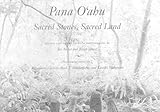Pana O'ahu : Sacred Stones, Sacred Land / ed. by Joe Singer, Jan Becket.
Material type: TextPublisher: Honolulu : University of Hawaii Press, [1999]Copyright date: ©1999Description: 1 online resource (220 p.)Content type:
TextPublisher: Honolulu : University of Hawaii Press, [1999]Copyright date: ©1999Description: 1 online resource (220 p.)Content type: - 9780824863845
- 919.69/30442 21
- GV199.42.H32 O143 2000eb
- online - DeGruyter
| Item type | Current library | Call number | URL | Status | Notes | Barcode | |
|---|---|---|---|---|---|---|---|
 eBook
eBook
|
Biblioteca "Angelicum" Pont. Univ. S.Tommaso d'Aquino Nuvola online | online - DeGruyter (Browse shelf(Opens below)) | Online access | Not for loan (Accesso limitato) | Accesso per gli utenti autorizzati / Access for authorized users | (dgr)9780824863845 |
Frontmatter -- Contents -- Foreword -- Preface -- Acknowledgements -- Introduction -- Pana O‘ahu -- Kona -- ‘Ewa -- Wai‘anae -- Waialua -- Ko‘olauloa -- Ko‘olaupoko -- Notes -- Glossary of Proper Names -- Glossary of Hawaiian Terms -- Bibliography -- Index -- Photography Credits -- Contributors
restricted access online access with authorization star
http://purl.org/coar/access_right/c_16ec
Few regions of the United States can equal the high concentration of endangered ancient cultural sites found in Hawaii. Built by the indigenous people of the Islands, the sites range in age from two thousand to two hundred years old and in size and extent from large temple complexes serving the highest order of chiefs to modest family shrines. Today, many of these structures are threatened by their proximity to urban development. Sites are frequently vandalized or, worse, bulldozed to make way for hotels, golf courses, marinas, and other projects. The sixty heiau photographed and described in this volume are all located on Oahu, the island that has experienced by far the most development over the last two hundred years. These captivating images provide a compelling argument for the preservation of Hawaiian sacred places. The modest sites of the maka‘ainana (commoners) - small fishing, agricultural, craft, and family shrines - are given particular attention because they are often difficult to recognize and prone to vandalism and neglect. Also included are the portraits of twenty-eight Hawaiians who shared their knowledge with archaeologist J. Gilbert McAllister during his survey of Oahu in the 1930s. Without their contribution, the names and histories of many of the heiau would have been lost. The introductory text provides important contextual information about the definition and function of heiau, the history of the abolition of traditional Hawaiian religion, preservation issues, and guidelines for visiting heiau.With contributions by Kehaunani Cachola-Abad, J. Mikilani Ho, and Kawika Makanani.
Mode of access: Internet via World Wide Web.
In English.
Description based on online resource; title from PDF title page (publisher's Web site, viewed 02. Mrz 2022)


